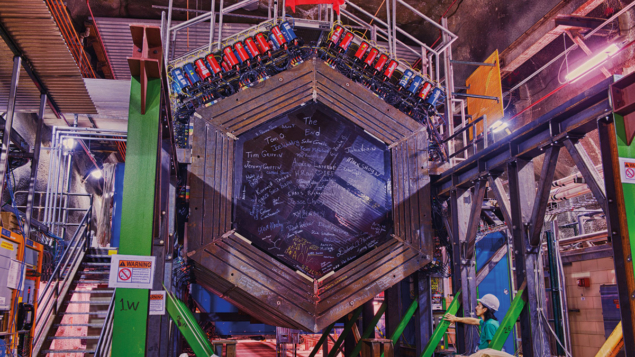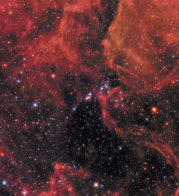
More than a century after its discovery, physicists are still working hard to understand how fundamental properties of the proton – such as its mass and spin – arise from its underlying structure. A particular puzzle concerns the proton’s size, which is an important input to understand nuclei, for example. Inelastic electron–proton scattering experiments in the late 1950s revealed the spatial distribution of charge inside the proton, allowing its radius to be deduced. A complementary way to determine this “charge radius”, and which relies on precise quantum-electrodynamics calculations, is to measure the shift it produces in the lowest energy levels of the hydrogen atom. Over the decades, numerous experiments have measured the proton’s size with increasing precision.
By 2006, based on results from scattering and spectroscopic measurements, the Committee on Data for Science and Technology (CODATA) had established the proton charge radius to be 0.8760(78) fm. Then, in 2010, came a surprise: the CREMA collaboration at the Paul Scherrer Institut (PSI) reported a value of 0.8418(7) fm based a novel, high-precision spectroscopic measurement of muonic hydrogen. Disagreeing with previous spectroscopic measurements, and lying more than 5σ below the CODATA world average, the result gave rise to the “proton radius puzzle”. While the most recent electron–proton scattering and hydrogen-spectroscopy measurements are in closer agreement with the latest muonic-hydrogen results, the discrepancies with earlier experiments are not yet fully understood.
Now, the MINERνA collaboration has brought a new tool to gauge the proton’s size: neutrino scattering. Whereas traditional scattering measurements probe the proton’s electric or magnetic charge distributions, which are encoded in vector form factors, scattering by neutrinos allows the analogous axial-vector form factor FA, which characterises the proton’s weak charge distribution, to be measured. In addition to providing a complementary probe of proton structure, FA is key to precise measurements of neutrino-oscillation parameters at experiments such as DUNE, Hyper-K, NOvA and T2K.
MINERνA is a segmented scintillator detector with hexagonal planes made from strips of triangular cross-section, which are assembled into planes perpendicular to the incoming beam. By studying how a beam of muon antineutrinos produced by Fermilab’s NuMI neutrino beamline interacts with a polystyrene target, which contains hydrogen closely bonded to carbon, the MINERνA researchers were able to make the first high-statistics measurement of the νμ p → μ+ n cross-section using the hydrogen atom in polystyrene. Extracting FA from 5580 ± 180 signal events (observed over an estimated background of 12,500), they measured the nucleon axial charge radius to be 0.73(17) fm, in agreement with the electric charge radius measured with electron scattering.
“If we weren’t optimists, we’d say [this measurement] was impossible,” says lead author Tejin Cai, who proposed the idea of using a polystyrene target to access neutrino-hydrogen scattering while a PhD student at the University of Rochester. “The hydrogen and carbon are chemically bonded, so the detector sees interactions on both at once. But then, I realised that the very nuclear effects that made scattering on carbon complicated also allowed us to select hydrogen and would allow us to subtract off the carbon interactions.”
A new experiment called AMBER, at the M2 beamline of CERN’s Super Proton Synchrotron, is about to open another perspective on the proton charge radius. AMBER is the successor to COMPASS, which played a major role towards resolving the proton “spin crisis” (the finding, by the European Muon Collaboration in 1987, that quarks account for less than a third of the total proton spin) by studying the contribution to the proton spin from gluons. Instead of electrons, AMBER will use muon scattering at unprecedented energies (around 100 GeV) to access the small momentum-transfer needed to measure the proton radius. A future experiment at PSI called MUSE, meanwhile, aims to determine the proton radius through simultaneous measurements of muon– and electron–proton scattering.
AMBER is scheduled to start with a pilot run in September 2023 and to operate for up to three years, with the goal to find a value for the proton radius in the range 0.84–0.88 fm, as expected from previous experiments, and with an uncertainty of about 0.01 fm. “Some colleagues say that there is no proton-radius puzzle, only problematic measurements,” says AMBER spokesperson Jan Friedrich of TU Munich. “The discrepancy between theory and experiments, as well as between individual experiments, will have to shrink and align as much as possible. After all, there is only one true proton radius.”
Further reading
T Cai et al. 2023 Nature 614 48.
J-P Karr et al. 2020 Nat. Rev. Phys. 2 601.





